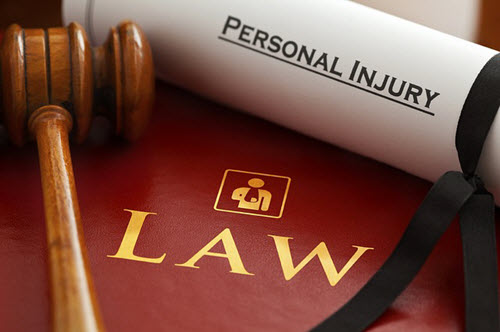Three Good Reasons to Add Personal Injury Damages Services to Your Practice
Personal Damages Calculations and Exposure to COVID-19
Financial experts who, in the past, have been reluctant to take on personal injury economic damages as part of their practice should reconsider that decision today. Not only is the field growing and on the verge of a potentially huge boom driven by the COVID-19 crisis, there are plenty of resources to help you quickly get up to speed performing these types of damages analysis. This article presents three reasons for valuation practitioners to consider adding personal injury, wrongful death, and wrongful termination damages calculations to their practice, and an introduction to resources needed to help get started.

In a world of spiraling economic damages claims now accelerated by the COVID-19 crisis, the need is growing for personal injury damages calculations.
Financial experts who, in the past, have been reluctant to take on personal injury economic damages as part of their practice should reconsider that decision today. Not only is the field growing and on the verge of a potentially huge boom driven by the COVID-19 crisis, there are plenty of resources to help you quickly get up to speed performing these types of damages analysis.
Although a few states have passed liability waivers, there is considerable debate whether such waivers weaken workplace safety and states are assessing the ramifications. Further, absent Congress amending a multitude of laws and regulations to include broad employer liability waivers, here are three good reasons to consider adding personal injury, wrongful death, and wrongful termination damages calculations to your practice, and an introduction to resources to help you get started.
#1: Surging Demand
These types of economic damage claims in the U.S. are already large, growing, and increasingly complex. For personal injury cases alone, recent government data suggests that there are more than 400,000 civil litigation suits brought every year from roughly 31 million recorded personal injuries.
Moreover, the COVID-19 crisis has already ratcheted up litigation that is likely to increase the number of future claims involving these types of economic damages. JD Supra is tracking almost a dozen trending litigation topics that may involve damages and claims a wave of COVID-19-related litigation is already rising.
#2: More Resources to Help You Get Started
Much like the valuation field, the personal injury damages field has developed a set of analysis, data, and reporting best practices necessary for performing personal injury economic damages calculations.
The first step an aspiring assessor of economic damages should take is get a copy of Determining Economic Damages from James Publishing. Originally authored by expert finance professor, Dr. Gerald Martin in 1988, it has been updated every year since and is a definitive resource on wrongful death and personal injury analysis. Best of all, the book comes with over 100 questionnaires, tables, and worksheets developed by Dr. Martin, who was affiliated with the National Association of Forensic Economists.
Determining Economic Damages guides financial practitioners from start-to-finish, walking practitioners through the steps including:
- How to determine past and future income losses
- The value of personal consumption
- Adjustments for personal consumption and taxes
- The replacement value of household services
- Life and work life expectancy
- Convert future losses to present value
- And how to put everything together to calculate loss
The Journal of Legal Economics, from the American Academy of Economic and Financial Experts (AAEFE), is another much-loved publication by those performing economic damages calculations. It provides regular updates on calculation methods, data sources, legal cases, and much more.
Moreover, there are plenty of online instruction resources. The National Association of Certified Valuators and Analysts (NACVA) has an ongoing series of webinars that regularly cover topics including “Calculating Damages in Personal Injury.”
#3: Software Pulls it All Together
In recent years, getting access to the data you need to perform and support damages calculations has become easier. Some of the data is published by the government and some of it is available from vendors and publishers in the industry. However, pulling it all together yourself still takes time.
Many damages experts now rely on software to pull together the analysis, data integration, and report creation, many claiming that it cuts the time it takes to build damages assessment reports by up to 50 percent. A variety of vendors offer programs that automate and standardize the process of developing economic damages claims, and at least one has much of the relevant data built in, smart navigation through the damages calculation process, a built-in workflow decision tree to walk you through the numerous assumptions and options, including assumptions related to relevant state law.
Jeffrey H. Harwell, CVA, MAFF, CMEA, regularly does economic damages calculations for clients even though most of his business remains business valuation work. “With today’s damages software, someone familiar with the financial field can within three or four hours easily feel confident constructing an economic damages calculation,” he says. “Once you’ve learned the ropes, many of the standard requests I get from attorneys are pretty easy to put together.”
Is Today the Right Time to Get Started?
With state and federal lawmakers responding slowly to legal and regulatory reform and the continuing growth of COVID-19 exposure cases, these types of damage cases are expected to grow. With the advent of newly capable and affordable software and support from practicing damages experts, there has never been a better time to add personal injury damages services to your practice.
David Fein is the CEO and co-founder of ValuSource, the #1 source for business valuation and damages calculation software. With over 90 percent market share, ValuSource provides most of the valuation and damages software used by thousands of financial professionals worldwide. ValuSource also creates Damages Advocate for economic damages calculations.
Mr. Fein can be contacted at (800) 825-8763 or by e-mail to support@valusource.com.








